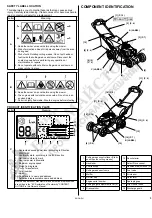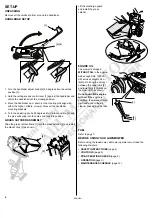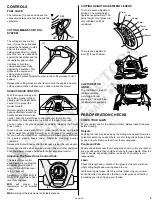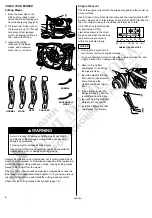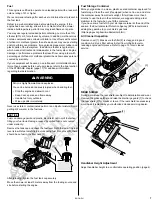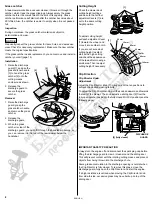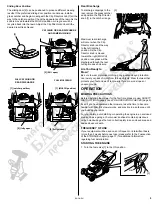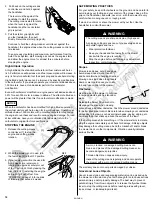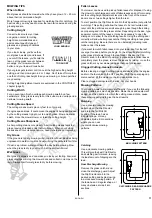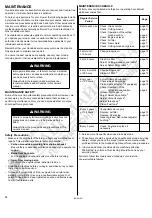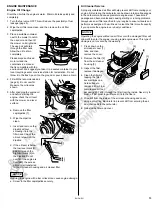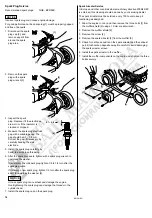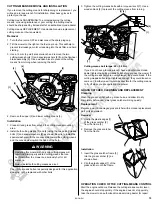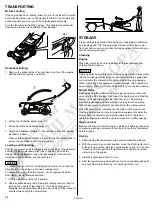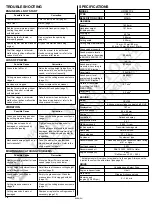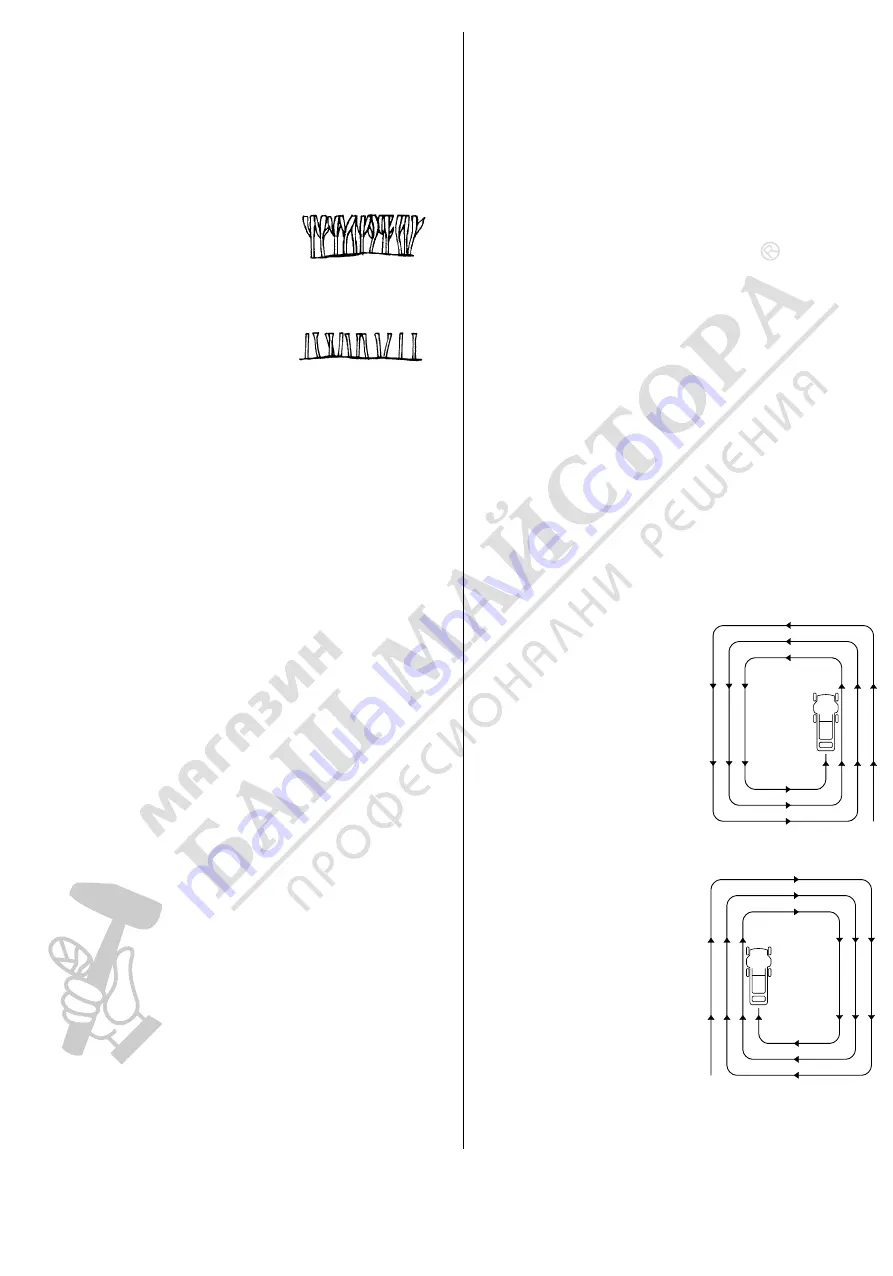
11
ENGLISH
MOWING TIPS
When to Mow
Most grasses should be mowed when they have grown 12 ~ 25 mm
above their recommended height.
More frequent mowing is required for mulching than for catching. For
best results, you may need to mow the lawn twice a week during the
growing season.
Cutting Height
Consult a local nursery or lawn
and garden center for cutting
height recommendations and
advice about specific types of
grasses and growing conditions
in your area.
If you look closely, you'll see that
most grass has stems and leaves. If
you cut off the leaves, you'll scalp the
lawn. Let the grass recover between
mowings. Your mower will work
better, and your lawn will look better.
If your grass gets too tall, cut it once at the highest cutting height
setting, and then mow again in 2 or 3 days. Don't take off more than
one third of total grass height in any one mowing, or brown patches
may develop.
Cutting height adjustment levers are explained in the
CONTROLS
chapter (page 5).
Cutting Width
For an even lawn finish, overlap each mowing swath by a few
centimeters. If the grass is very tall or thick, use more overlap and a
narrower mowing swath.
Cutting Means Speed
The cutting means must spin very fast to cut properly.
If engine speed drops, it could mean the engine is being overloaded
by the cutting means trying to cut too much grass. Mow a narrower
swath, move the mower slower, or raise the cutting height.
Cutting Means Sharpness
A sharp cutting means cuts cleanly. A dull cutting means tears the
grass, leaving shredded ends that turn brown. When your cutting
means doesn't cut cleanly anymore, have it sharpened or replaced.
Dry Grass
If the ground is too dry, mowing will stir up a lot of dust. Besides being
unpleasant to work in, too much dust will clog the carburetor air filter.
If dust is a problem, water your lawn the day before mowing. Mow
when the grass is dry to your touch, but the soil is still moist.
Wet Grass
Wet grass is slippery and can make you lose your footing. Also, wet
grass clippings will clog the mower deck and collect in clumps on the
lawn. Always wait for wet grass to dry before mowing.
Fallen Leaves
Your mower can be used to pick up fallen leaves for disposal. If using
the mower to catch large amounts of fallen leaves and not for mowing,
set the cutting height adjustment levers so the front of the mower
deck is one or two settings higher than the rear.
To start, position the Clip Director knob in the #9 position (not quite full
mulching). This setting will allow the leaves to be recirculated and
recut until the particles are small enough to pass though the sliding
door opening and into the grass catcher. Depending on the size, type,
and water content of the leaves, it may be necessary to open the
sliding door to allow for best catching results. Using the sliding door
correctly will allow better grass catcher filling, resulting in less grass
catcher emptying. Be sure there are no obstacles, including rocks,
hidden under the leaves.
If you want to mulch fallen leaves into your lawn, don't let the leaf
cover get too deep before you begin. For best results, start mulching
while grass still shows through the leaf cover. Position the Clip
Director knob in the MULCH position. In places where fallen leaves
completely cover the grass, remove the leaves by raking, or use the
grass catcher so your mower can pick them up for disposal.
Clogged Cutting-means Enclosure
Before clearing a clogged cutting-means enclosure, stop the engine
and turn the fuel valve to the OFF position. With the spark plug cap
disconnected, tilt the mower so the air cleaner side is up.
Clear a clogged enclosure with a stick, not your hands.
Mowing Patterns
Your Honda mower will work most efficiently if you use the following
mowing patterns as much as possible. Mower deck and equipment
design, and the direction in which the cutting means rotate, cause
these mowing patterns to give the best results.
Mulching
Use a counterclockwise mowing
pattern when the Clip Director
knob is in the full MULCH
position. If the lawn has an
irregular shape, or many
obstacles, divide it into sections
where you can use
counterclockwise mowing
patterns.
Catching
Use a clockwise mowing pattern.
This will give the best Clip Director
and catching performance, leaving
the least amount of clippings on the
lawn.
Rear Discharge Mowing
Remove the grass catcher and
close the discharge guard. Adjust
the Clip Director knob to the
desired setting and begin mowing
in a clockwise mowing pattern. If
the lawn has an irregular shape, or
many obstacles, divide it into
sections.
LONG ENOUGH
TOO SHORT
MULCHING PATTERN
CATCHING & REAR-DISCHARGE
PATTERN



